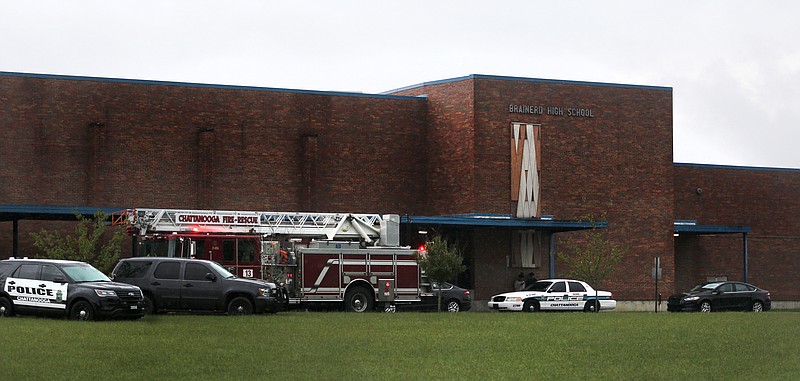NEXT STEPS
The Tennessee Department of Education has identified five next steps to address the challenges identified in the review of school safety plans and data, according to a news release.> Identify priorities for supporting districts and schools> Revise emergency operations plans and drill log templates to enhance planning and improve documentation> Create options for delivering training and guidance that provide flexibility and build local capacity> Monitor grant spending and results to identify promising practices> Integrate safety planning requirements into the school approval process
Tennessee schools conduct 15 drills on average each year - fire drills, lockdown drills, earthquake drills and CPR/AED drills - but some gaps remain in how safe or how prepared for emergencies schools are.
Many schools, especially larger schools and elementary schools, have strong security procedures, but there are areas to improve such as in controlling what vehicles can drive on campus, who can get into a school and surveillance, according to a report released Wednesday by the Tennessee Department of Education.
The report reviewed the security and safety preparedness in Tennessee schools based on the mandatory security assessments schools had to submit to the state early this fall.
"We take seriously the responsibility of providing a safe and secure learning environment for Tennessee students and will continue to support our schools in this daily effort," Education Commissioner Candice McQueen said in a statement. "Critical work to improve school safety has been started under Governor [Bill] Haslam's leadership and this report shows us several ways we can continue to improve our practices moving forward. We know that safety must be an ongoing process of continuous improvement."
For the first time, the report identified trends and collected data at the school level on aspects of security such as perimeter control, vehicle control, access control, visitor management, surveillance, communications and training.
The review found that larger schools with more personnel had a better grasp on some areas of security, possibly due to having more resources available, and also found that schools with lower percentages of economically advantaged students met more of the benchmarks in the security aspects.
It also reported that 93 percent of schools complete lockdown drills, and 10 percent incorporate law enforcement into those drills. Only 65 percent of schools met the requirements for fire drills, though - which include holding a fire drill with full evacuation every 30 days.
Lockdown drills are the gold standard for safety drills, said Katherine Cowan, director of communications for the National Association of School Psychologists. Drills help people feel prepared and know what to do and not panic in the event of a real emergency, she said.
"The drill isn't the whole part of the emergency preparedness process," Cowan noted, though. "It's a piece of it, but not all of it."
That was another emphasis of Tennessee's report - streamlining and consolidation of emergency plans for schools and sharing best practices across the state.
School safety has been a top concern for lawmakers, state officials, educators and parents alike. The shooting at Marjory Stoneman Douglas High School in Parkland, Florida this February sparked a debates about arming teachers, what type of drills to hold, and who should pay for school resource officers.
Haslam formed a school safety working group and adopted several recommendations, including requiring every Tennessee school and school district to submit the safety assessments upon which Wednesday's report is based. Haslam also allocated $35 million - $25 million in one-time funds and $10 million in recurring grants - toward beefing up security across the state's schools.
Locally, safety has been a hot topic for Hamilton County Schools. Superintendent Bryan Johnson has acknowledged the struggle to fund resource officers for every school, devoting $500,000 to hiring more officers in this year's budget. Securing facilities through new surveillance cameras, controlled access door locks and revamped interior entrances also are on the district's priority list.
"School safety is a top priority for Hamilton County Schools as we continue to expand our partnership with law enforcement professionals to provide a safe learning environment for our children," Johnson said in a statement. "Our safe schools focus for the past year has addressed the immediate priorities identified in the state report, as we have ramped up reviews of facilities with law enforcement, funded additional SROs, added entrance security to limit access to our buildings, and a visitor management system to monitor those who enter our schools."
The topic of renovating some school entrances was discussed at the school board's recent retreat as the panel makes plans for an facilities audit and creating a 10-year plan for renovating and building schools.
Contact staff writer Meghan Mangrum at mmangrum@timesfreepress.com or 423-757-6592. Follow her on Twitter @memangrum.
